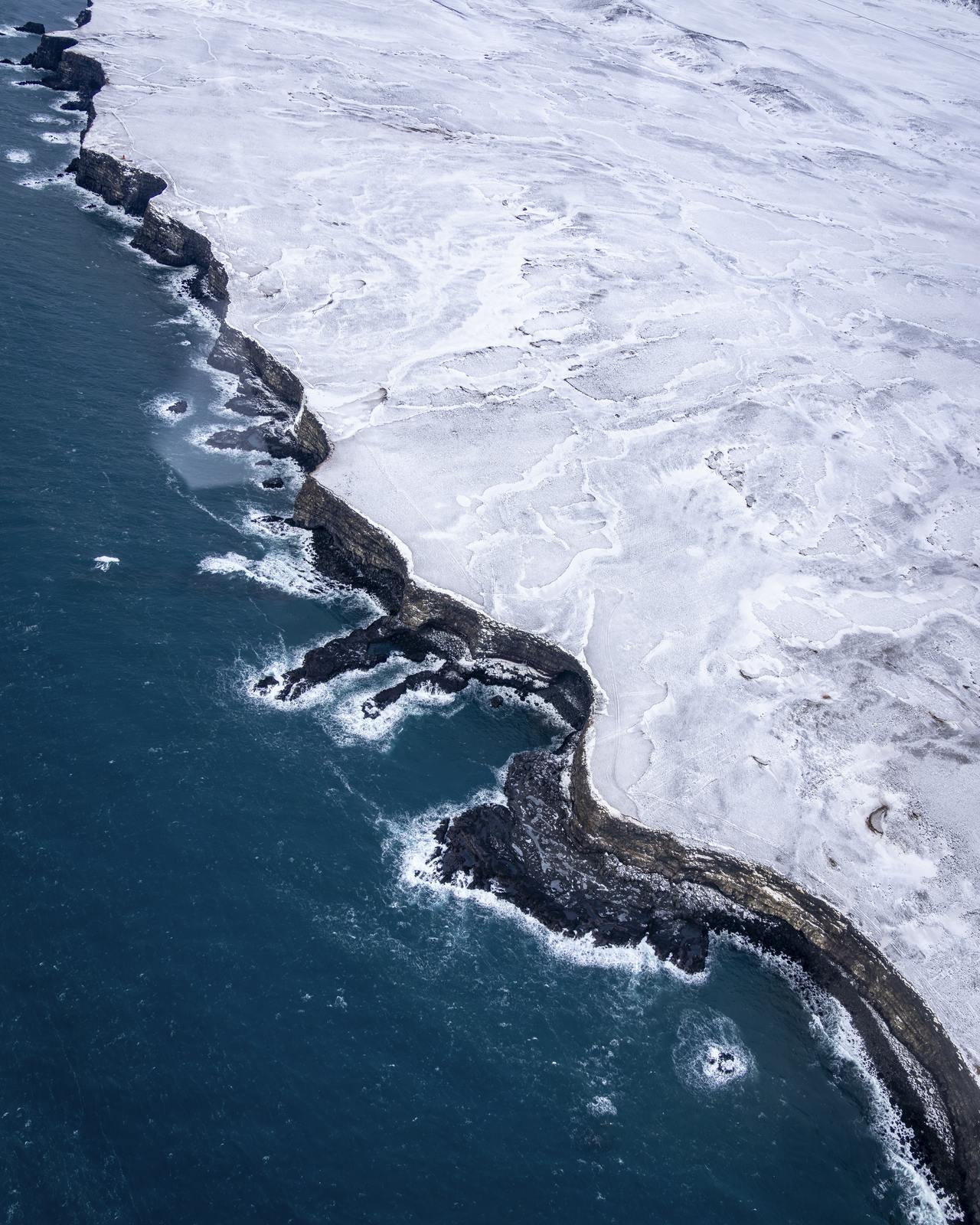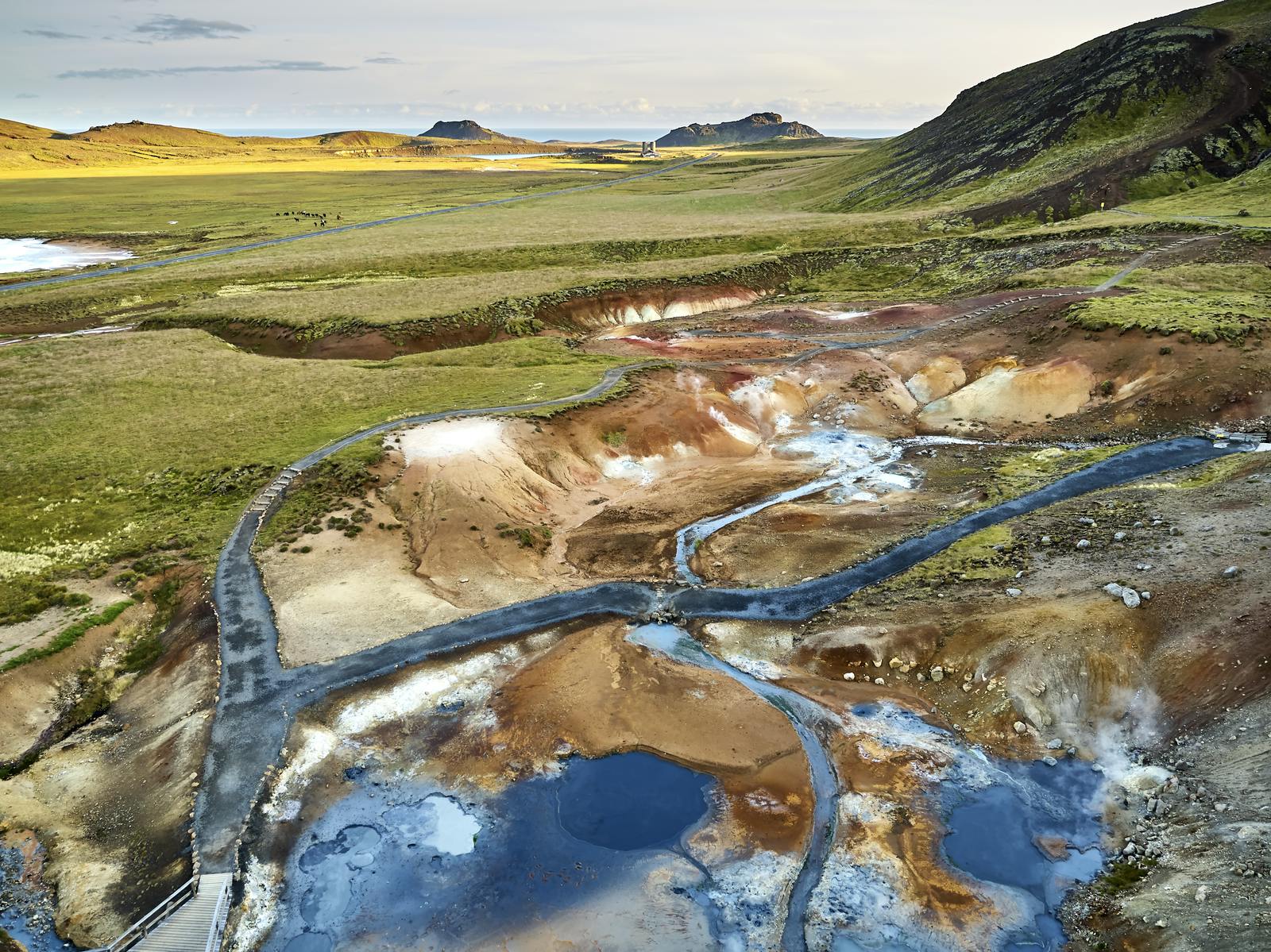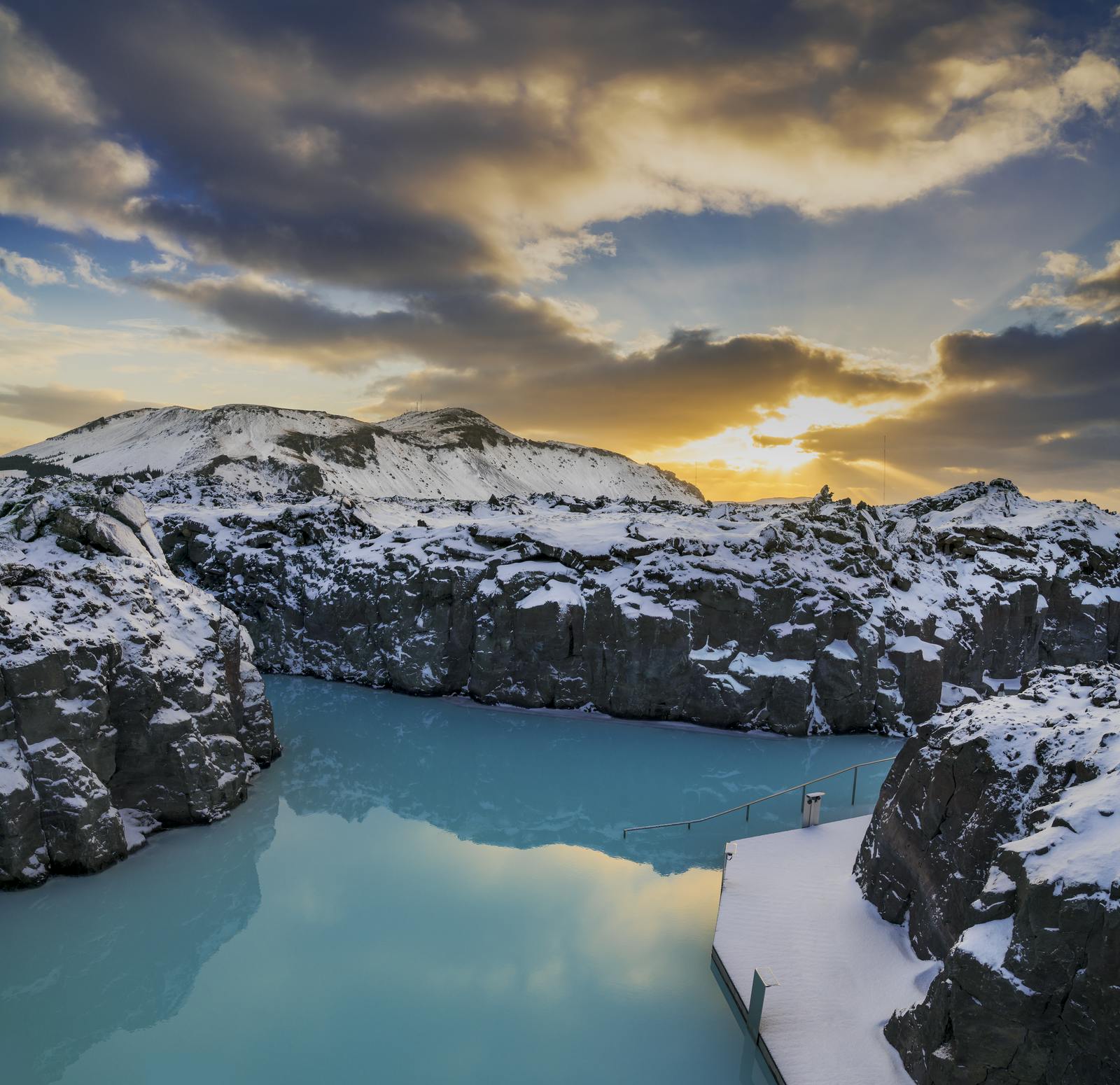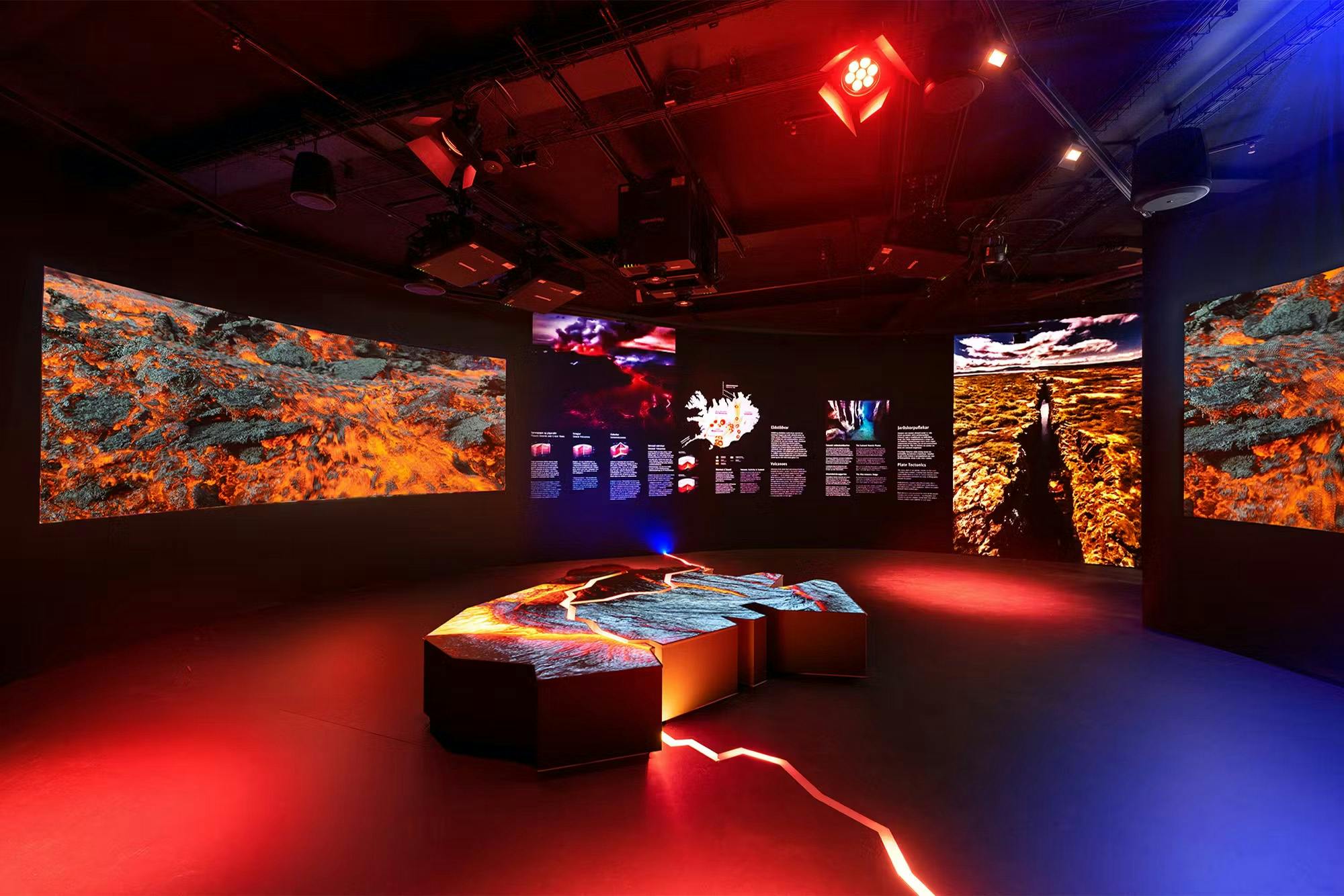
Krýsuvík Travel Guide
Krýsuvík is a lesser-known gem on the Reykjanes Peninsula that offers a vivid experience of Iceland’s volcanic and tectonic activity. Boiling hot springs, mud pots, and colourful, mineral-stained hills create a landscape worthy of Iceland’s title: the Land of Fire and Ice. Best of all, it's a short distance to Reykjavík, making it within easy reach; the perfect addition to any Iceland adventure.
What is Krýsuvík and Why Visit?
Krýsuvík is a geothermal area on the Reykjanes Peninsula in Southwest Iceland.
The main geothermal activity of the area is in Seltún. Here, you can witness the Earth in constant motion. Clouds of steam spill from vents, boiling hot springs hiss with scalding gases, and mud pools bubble with volcanic fury. The entire volatile scene is set against hillsides streaked with rainbow hues, a result of mineral deposits.
Few places feature such a spectacular array of geological phenomena in a single location. The Krýsuvík area is one of them. It’s a visceral reminder of Iceland’s living, ever-changing landscape forged by volcanic forces hiding in plain sight.

Geology, History, and Cultural Significance of Krýsuvík
Lying within the rift zone of the Reykjanes Peninsula, Krýsuvík rests on the Mid-Atlantic Ridge, where the Eurasian and North American tectonic plates are pulling apart. As the plates separate, magma rises closer to the surface, heating groundwater and creating fumaroles, hot springs, and mud pots.
Here is also an active volcanic system, with at least 10 highly volcanic episodes over the last 8,000 years. One of the most significant events was the Krýsuvík fires of the 12th century, when fissure eruptions produced large lava flows like Ögmundarhraun and Kapelluhraun that flooded farms, ruined a church and completely transformed the landscape of the region. Still, human history in the area is long. Farms and settlements existed in Krýsuvík from the Middle Ages to the present day.
As in many parts of Iceland, the land is steeped in folklore. Even the name Krýsuvík means “bay of Krýsa.” Legend says a witch named Krýsa lived here with her cousin Herdís.
Reykjavík’s Perlan Museum is a fascinating place to learn about the volcanic forces behind the Land of Fire and Ice. Be sure to check out the immersive Volcano Show, which offers dramatic footage and insights into Iceland's volcanic activity.
How to Get to Krýsuvík
When coming from Reykjavík, the Krýsuvík area is a fairly simple drive. Take Route 41 towards Keflavik, exit to Route 43, and turn left onto Route 42. Keep an eye out for the signs; Krýsuvík is just off Route 42. The entire drive is around 30 to 45 minutes, depending on pace and road conditions.

Exploring Krýsuvík’s Volcanic and Geothermal Landscape
Even though Krýsuvík is living proof of the Earth’s fiery temper, it’s been designed to be as tourist-friendly as possible.
The alien-like terrain of the Seltún geothermal area, for instance, is surprisingly accessible. Visitors can marvel at the hissing steam vents, fumaroles, mud pots, and boiling hot springs safely, thanks to the boardwalk weaving through the geothermal fields. Guests must be prepared, though; the distinctive scent of sulfur has been likened to rotten eggs.
Beyond Seltún, the wider Krýsuvík area reveals stunning geological variety. Colourful, mineral-rich hills shimmer in vibrant shades of red, yellow, and white, painted by the extensive geothermal deposits. Adding a unique contrast to the steaming landscape are the crater lakes. The most notable is Grænavatn Lake, known for its striking emerald colour.
Hiking Trails in Krýsuvík
Beyond the short, main loop around Seltún, hikers can enjoy other trails that delve deeper into the Reykjanes wilderness.
For a longer outing, the Krýsuvík Geothermal Area Loop extends 4.7 miles (7.6 kilometres), rewarding trekkers with beautiful views. Adventurers seeking a more challenging hike can enjoy the 9.2-mile (14.8-kilometre) Djúpavatn Lake Loop. This trail takes you to Lake Djúpavatn, but make sure you’re prepared: it’s often rated as a difficult hike.

Facilities, Parking, and Accessibility
Part of the draw of Krýsuvík is its convenience, as it offers essential facilities for visitors. For one, a paid gravel parking lot sits right next to the Seltún geothermal area. Basic public restroom facilities are also provided on-site.
Additionally, the site was built to accommodate everyone. With boardwalks and viewing platforms, the main Seltún area is accessible for most visitors, including those using wheelchairs or strollers.
Best Time to Visit Krýsuvík and Safety Tips
The Krýsuvík geothermal area is open year-round, so the best time to visit depends on what you want to prioritise.
Summer offers the warmest temperatures and nearly 24 hours of daylight, making it easy to visit any time of the day. Meanwhile, the transitional colours of spring and autumn are captivating, too.
Winter is the most dramatic time to view Krýsuvík, with cold conditions making the steam more visible. It’s also the time you can potentially see the Northern Lights over the bubbling landscape. Just be aware that weather and daylight hours can affect road and trail conditions.
No matter the season, it’s important to keep safety tips and guidelines in mind.
- Always stay on the marked paths and boardwalks. The ground in geothermal areas is highly unstable, and the water is scalding hot.
- Respect all warning signs and ropes indicating dangerous areas.
- Do not touch the water or mud pots. They are at or near the boiling point.
- Watch your step. Boardwalks can be wet and slippery due to steam condensation.
- Avoid flying drones over the geothermal fields. Many travellers refrain from using drones because of the steam vents and exposure to sulfur-rich gases.

Nearby Attractions on the Reykjanes Peninsula
The Krýsuvík area is centrally located in the heart of the Reykjanes. Thus, it’s ideal to bundle the geothermal site with other natural gems in the region.
Krýsuvíkurbjarg Cliffs
Just a short drive from the geothermal fields are the magnificent Krýsuvíkurbjarg Cliffs. Stretching roughly 9 miles (15 kilometres) and rising 131–196 feet (40–60 meters) tall, the cliffs drop sharply into the Atlantic.
In summer, the cliffs of Krýsuvíkurbjarg become a bustling seabird colony. It transforms into the breeding grounds for tens of thousands of seabirds, including kittiwakes, guillemots, razorbills, and even Atlantic puffins.
Lake Kleifarvatn
North of the Krýsuvík geothermal area is the largest lake on the peninsula: Kleifarvatn Lake. Nestled among stark volcanic hills and lava fields, its dark shoreline creates a striking contrast with the deep blue waters. Its quiet, mysterious atmosphere makes it a popular spot for photography, fishing, and sightseeing.
Blue Lagoon
Perhaps the most famous attraction on the Reykjanes Peninsula, the world-renowned Blue Lagoon is also easily reachable from Krýsuvík. Known for its milky-blue, mineral-rich water, the lagoon offers a relaxing experience, contrasting with the raw power of the geothermal fields.

Travel and Photography Tips for Krýsuvík
- Dress in Layers: Reykjanes is windy, and temperatures can change quickly. Waterproof and windproof outer layers are essential.
- Allow for Time: While the Seltún boardwalk is short, allocate at least one hour to enjoy the geothermal area and take photos. Add extra time if you plan to hike.
- Time Your Visit for Steam and Light: Early morning or late in the day typically offers the least crowds and the best light. Cooler temperatures tend to make the steam more visible, adding drama to your shots. A slower shutter speed can blur the steam into a misty effect for an ethereal look.
- Use the Boardwalk for Composition: The wooden pathways provide excellent leading lines and depth in your frame. They guide the viewer’s eye toward steaming vents, colored hillsides, and geothermal pools.
- Visit at Golden Hour: The low light of sunrise or sunset accentuates the colours of the hills and the steam.
The Fiery Heart of Reykjanes Peninsula
Krýsuvík stands as a truly unique highlight of the Reykjanes Peninsula, a window into Iceland’s restless geology. From the simmering spectacle of Seltún to the windswept coastline of Krýsuvíkurbjarg, this area is the perfect alternative to the Golden Circle. Here, you stand atop the Mid-Atlantic Ridge, a place where the Earth makes its forces known.
Learn more about the geological activities that shape the planet at Perlan Museum’s Forces of Nature exhibition.

FAQs About Krýsuvík
Where is Krýsuvík?
Krýsuvík is a geothermal area located on the Reykjanes Peninsula in Southwest Iceland.
How do you get to Krýsuvík?
The area is easily reached from Reykjavík via a 30- to 45-minute drive.
Is Krýsuvík free to visit?
There is no entry fee to the geothermal area itself. However, visitors must pay a fee to use the parking lot at the Seltún site.
What is the Seltún geothermal field?
Seltún is the main attraction at Krýsuvík, featuring an accessible landscape of boiling mud pots, steaming fumaroles, and colored mineral deposits.
How long does it take to visit Krýsuvík?
Allow approximately 30 minutes to one hour to explore the main Seltún boardwalk and viewing platforms.
Can you hike around Krýsuvík?
Yes, in addition to the short Seltún loop, there are longer, more challenging marked trails available, such as the Krýsuvík Geothermal Area Loop and the Djúpavatn Lake Loop.








